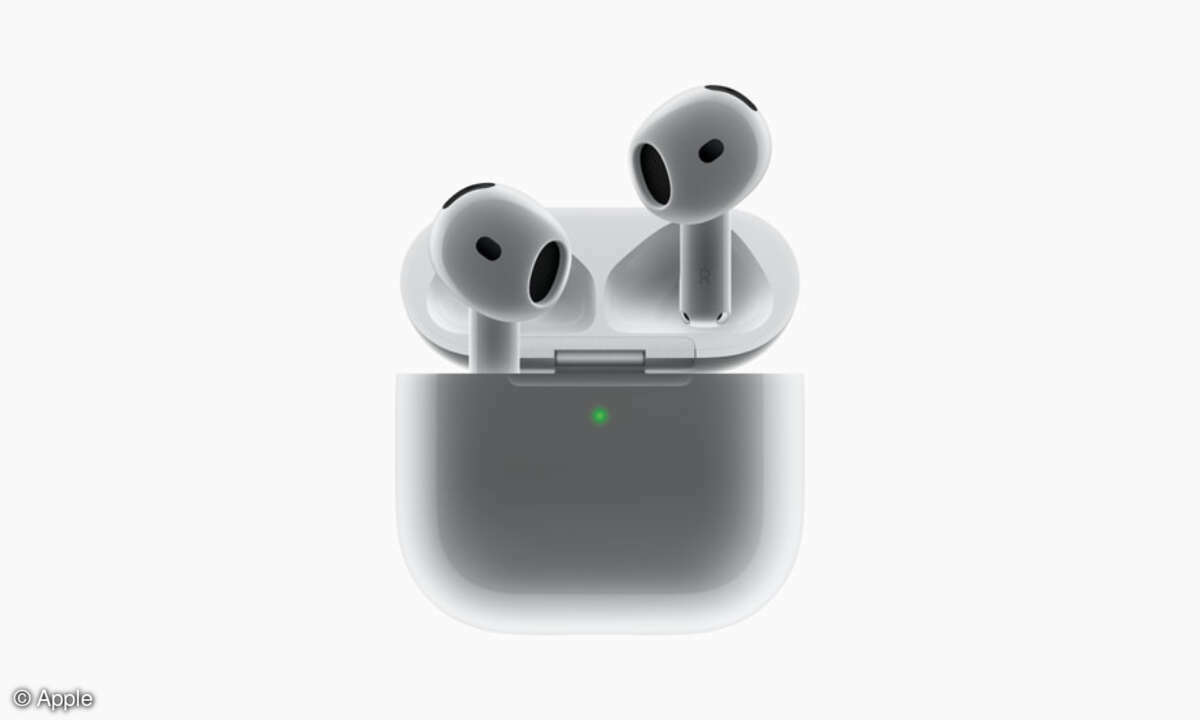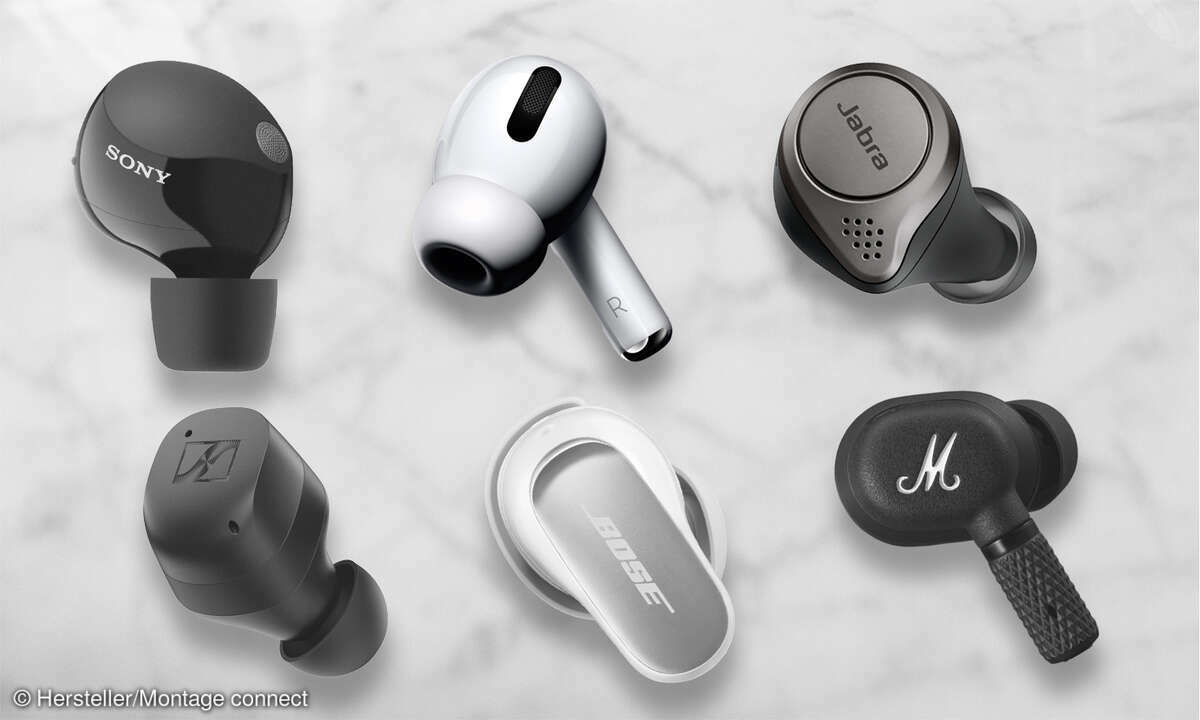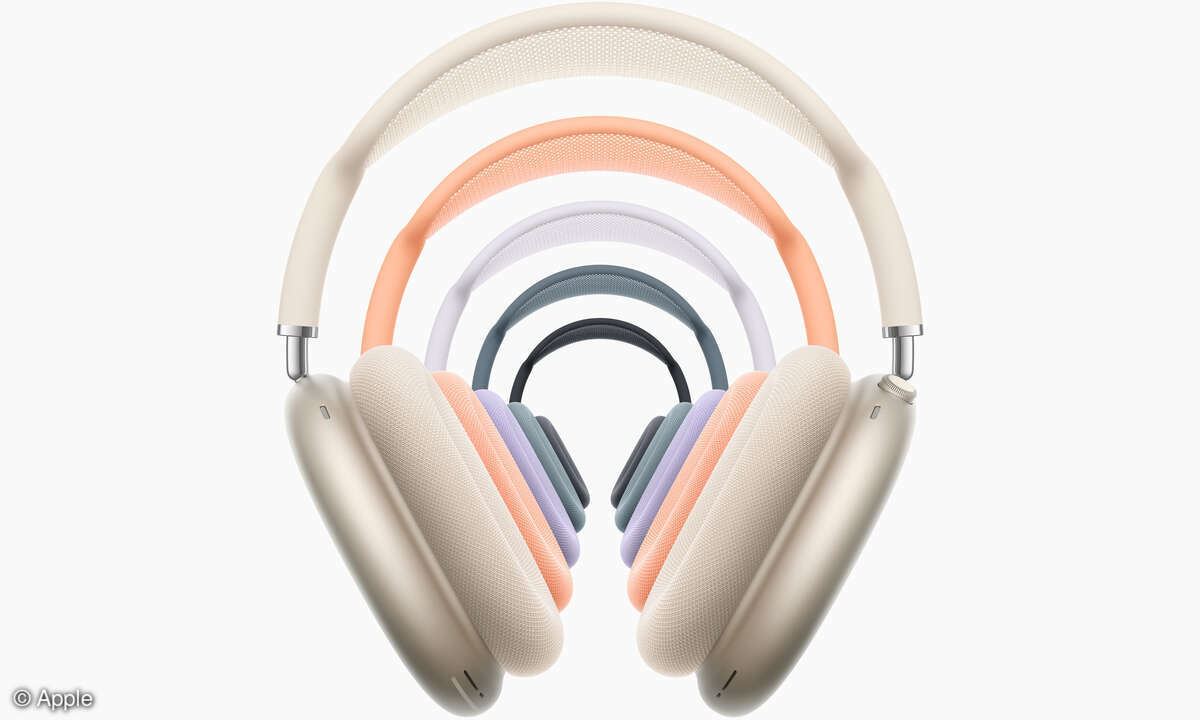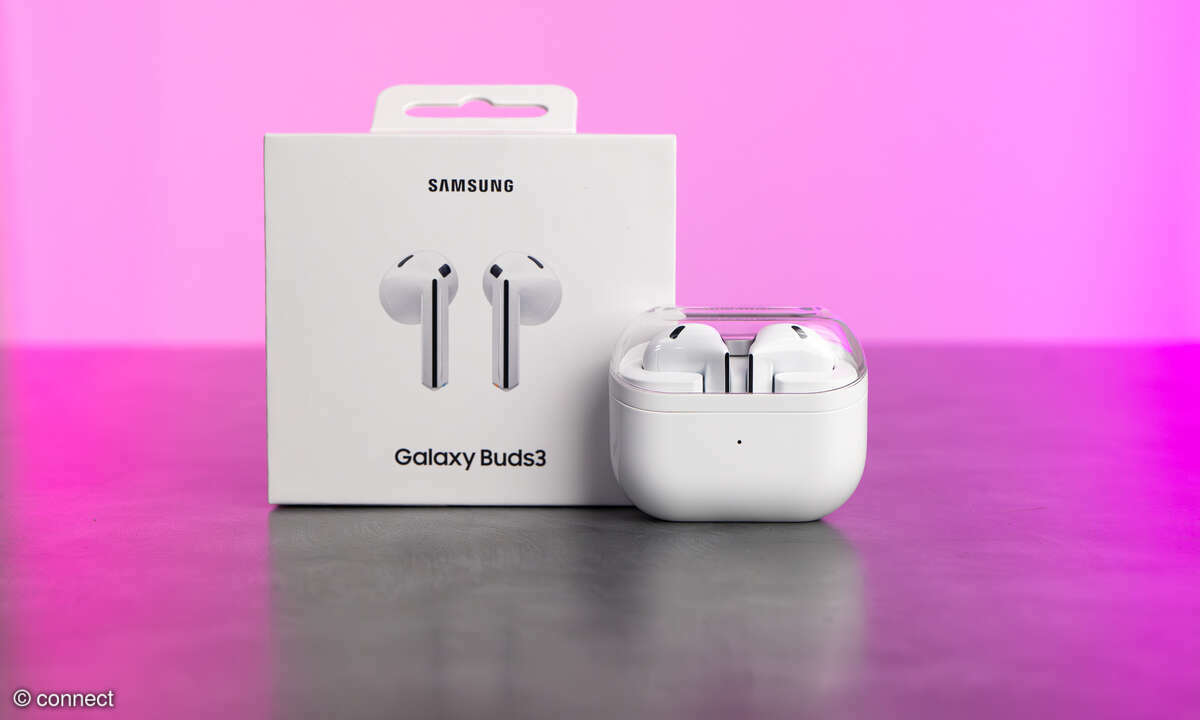Pro
- Excellent sound quality
- Compact charging case
- good ANC
Contra
- No volume control on the capsules
- Limited features for Android
Conclusion
With the fourth generation of AirPods, manufacturer Apple shows that open ear technology does not have to be fundamentally inferior to classic in-ears. They are a serious alternative for music fans who don’t want to put silicone plugs in their ear canals. However, Apple should still work on weaknesses such as the lack of volume control on the capsules, which will probably be reserved for Generation 5.
The AirPods 4 offer numerous technical improvements over their predecessors and are intended to set new standards for open earphones. One of the biggest innovations is the IIntegration of active noise cancellation (ANC) into the open designwhich is technically extremely complex and therefore only very few manufacturers have dared to use this function.
ANC enables a significant reduction in ambient noise, especially in the low frequency range. This should work with the AirPods 4 without losing the advantages of an open wearing experience.
If you don’t need ANC, Apple offers one extra version without noise cancellation, which costs 50 euros less but otherwise provides largely the same features.
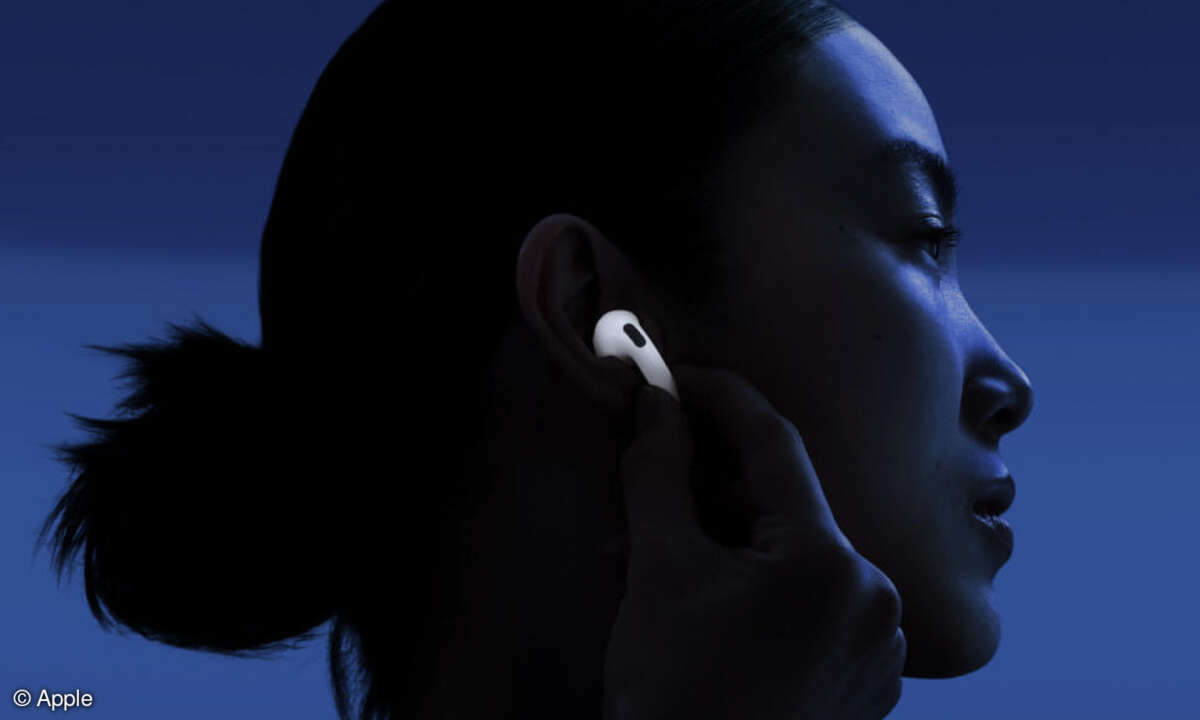
New design, better wearing comfort
Compared to previous models, the design has also been refined to ensure an improved fit and greater comfort. Through subtle changes to the contour and width of the AirPods capsules, they should now sit more stable in the ear and offer better support for many users.
The charging options have also been expanded: the AirPods 4 charging case now supports USB-C, wireless charging and even the Apple Watch chargers that attach magnetically to the charging case.

H2 chip brings more possibilities
According to Apple, the H2 chip, which is now housed in the handle, improves the acoustics and ensures an overall more compact design. It is also responsible for connectivity to sources such as smartphones, tablets and notebooks. Anyone who stays in the Apple universe has clear advantages.
Unlike traditional multipoint pairing, the number of sources on Apple devices is not limited. In the test we used an iPhone, an iPad, three different Macs (with Intel and Apple CPUs) and an Apple TV. The automatic switching between sources always worked reliably and quickly, great! No other manufacturer can currently imitate Apple.
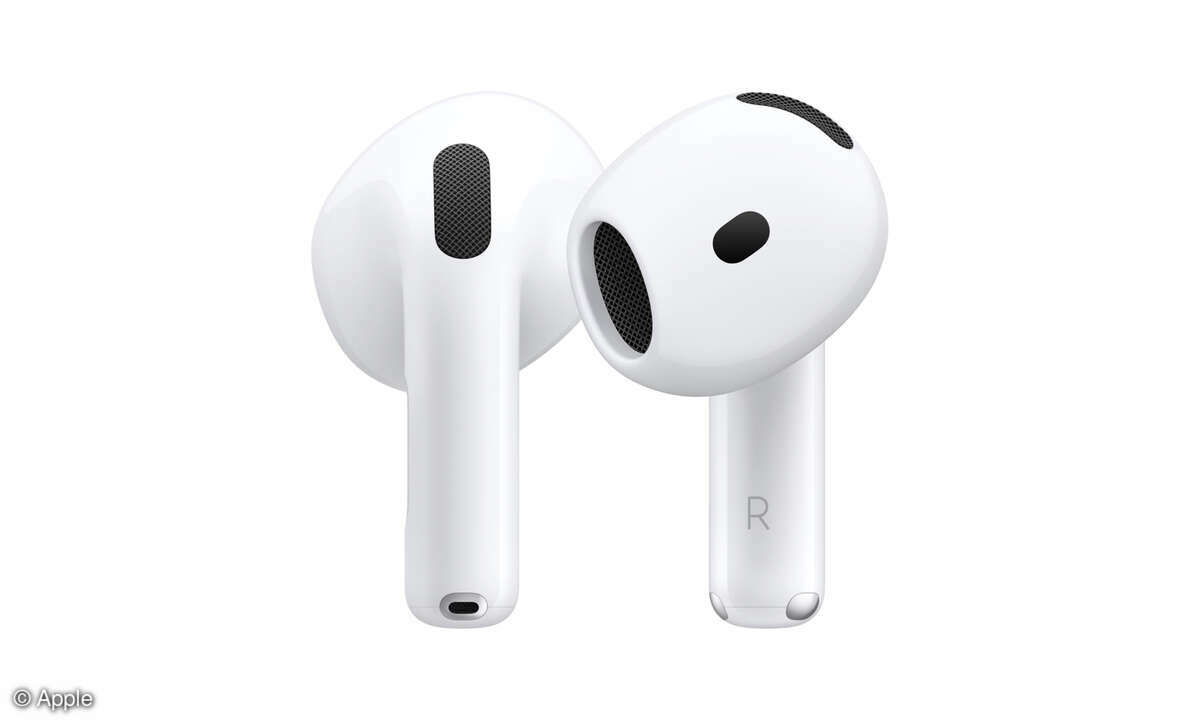
In the listening test: powerful sound
The audio quality has been further improved by the new driver and integrated amplifier, which we tested with a amazingly rich bass, transparent and clear highs as well as a finely detailed instrument separation. In a direct comparison to the 3rd generation of open AirPods, the differences were not big, but definitely noticeable. To the However, the AirPods 4 did not come close to the sound quality of the closed Pro versions. This is probably due to the physics of the open design.
Spatial Audio
Apple’s “Personalized Spatial Audio mit dynamischem Headtracking“ which is intended to provide an immersive listening experience. This function has been available on the Pro models for a long time, but now the normal AirPods are following suit. The technology adapts the sound in real time to the movements of the head, creating the feeling that the sounds are coming from a fixed position in space.
This ensures a cinema-like experience, especially when watching films, games or FaceTime calls, by significantly increasing the spatial depth and precision of the sound. The individual adjustment based on your own hearing profile makes it possible Spatial Audio even more precise and personal, significantly improving immersion in media content. We were able to experience this impressively in the test. If you don’t like the feature, you can deactivate the function in the settings.

Smart conversation recognition
Another function of the AirPods 4 that should not be ignored in practice is conversation recognition, which previously only the Pro models had. It makes it possible to have seamless conversations without having to remove the AirPods. As soon as the AirPods detect that the wearer is speaking, the Media volume automatically reduced and ambient sounds are amplified to provide natural conversation.
This feature works closely with the adaptive audio, which intelligently adapts to the surrounding noise. Once the call ends, the media volume will return to its original level. Overall, this function makes interaction with the environment much easier and increases comfort in everyday life.
In practice it worked surprisingly well. In most cases, the detection was reliable and quick. Misidentifications, such as those caused by throat clearing, were largely absent.
In the test, the AirPods 4 were able to impress with other positive features. Particularly noteworthy is the surprisingly small charging case, which proved to be extremely practical in everyday life thanks to its compact design. Despite their open-ear design, the AirPods 4 always sat securely and comfortably in the ear, which ensures stability even during quick movements.

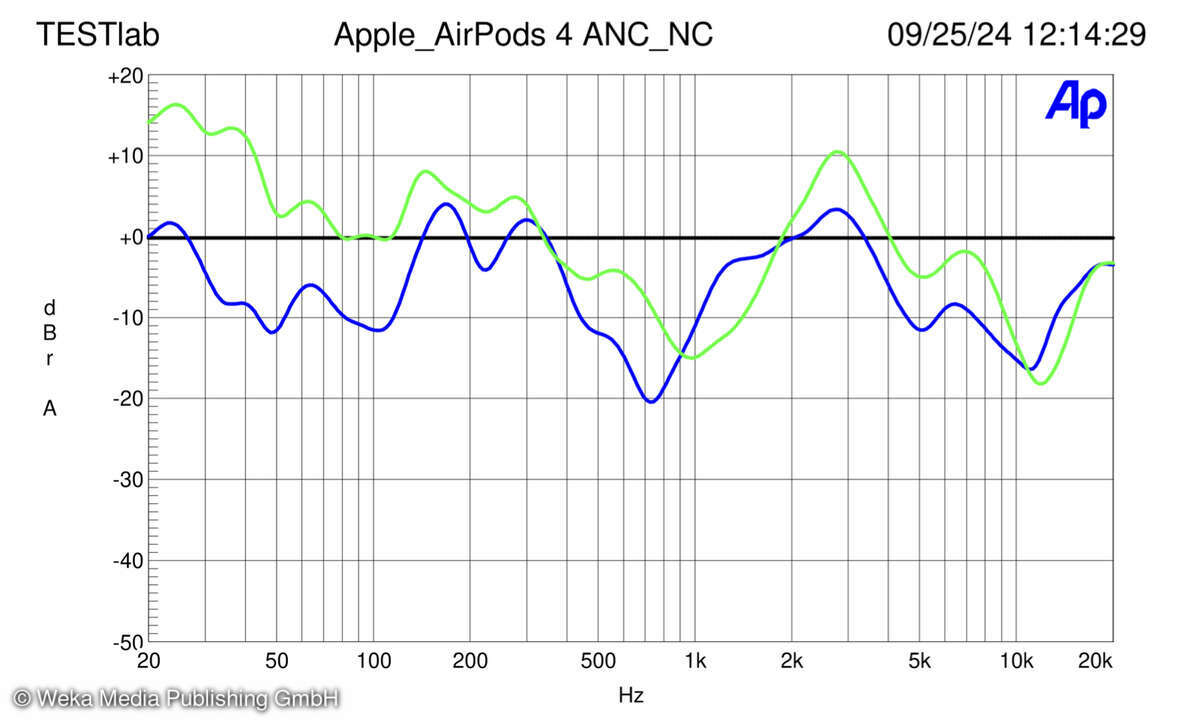
Weaken
Yes, there are disadvantages too. Unlike the Pro models, for example, there is no volume control directly on the capsules. This requires either control via Siri or access to the connected source. This is annoying in everyday life.
What’s more serious, however, is that you still have to rely on the Apple universe if you want to use all the functions. Features like Personalized Spatial Audio, dynamic head tracking, Adaptive Audio, Conversation recognition and seamless automatic connection to multiple sources are just on Apple devices usable.
The simple configuration and integration with “Find My” to locate the AirPods is also only available with an Apple device. Android users can use the AirPods as Bluetooth headphones, but they have to miss out on these advanced features.
Very good
AUDIO+stereoplay Test
AppleAirPods 4
Open-ear headphones
Month 10
Apple AirPods 4 – Conclusion
With the fourth generation of AirPods, manufacturer Apple shows that open ear technology does not have to be fundamentally inferior to classic in-ears. You are one serious alternative for music fans who don’t want to put silicone plugs in their ear canals. However, Apple should still work on weaknesses such as the lack of volume control on the capsules, which will probably remain reserved for Generation 5.
| Technical data | Details |
|---|---|
| Chip | Apple H2-Chip |
| Connectivity | Bluetooth 5.3 |
| Audio Technology | Personalized Spatial Audio, Adaptive EQ, Active Noise Cancellation, Transparenzmodus |
| Sensors | Optical in-ear sensor, acceleration sensor, proximity sensor, force sensor |
| Battery life (AirPods) | Up to 5 hours (without ANC), Up to 4 hours (with ANC) |
| Battery life (with charging case) | Up to 30 hours (without ANC), Up to 20 hours (with ANC) |
| Charging options | USB-C, wireless charging with Qi and Apple Watch chargers |
| Charging case connectors | USB-C |
| Water and dust protection | IP54 (protection against dust, sweat and water) |
| Weight (AirPods) | 4.3 g |
| Weight (Drawer Case) | 32.3 g |
| Dimensions (AirPods) | 30.1 mm x 18.3 mm x 18.1 mm |
| Dimensions (charging case) | 46.2 mm x 50.1 mm x 21.2 mm |
| compatibility | Compatible with iPhone, iPad, Mac, Apple Watch, Apple TV, Android limited |
| Special features | Spatial audio with dynamic head tracking, conversation recognition, adaptive audio |
Source: www.connect.de


